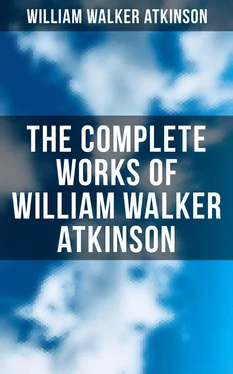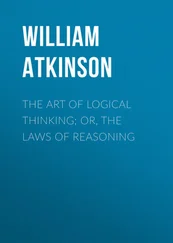Professor Nelson Sizer says: "Though all human beings have the general human form and features—though all have eyes, nose, mouth, chin, etc., yet each one has a different face and look from every other. And, more, yet, the same person has a very different facial look at different times, according as he is angry or friendly, etc. And always the same look when in the same mood. Of course, then, something causes this expression—especially, since all who are angry, friendly, etc., have one general or similar expression; that is, one look expresses anger, another affection, another devotion, another kindness, etc. And since nature always works by means, she must needs have her physiognomical tools. Nor are they under the control of the will, for they act spontaneously. We cannot help, whether we will or no, laughing when merry, even though in church, pouting when provoked, and expressing all our mental operations, down even to the very innermost recesses of our souls, in and by our countenances. And with more minuteness and completeness than by words, especially when the expressions are intense or peculiar."
Professor Drayton says, "Everything, from head to feet, of form, size, and action, indicates in some degree, the character of the individual, or state of mind, and feeling in exercise for the time being. The arching or depressing of the eyebrows, the full opening or partial closing of the eye, the pursing or pouting of the lips, the firm set jaw, the elevated head, the lofty shoulders, the stiff attitude, the dignified and stately step, or the reverse of this, will impress each observer in respect to the changing moods which may exist in a given individual.... Each of the mental organs has its natural language, as shown in pantomine, which is exhibited by the gestures and motions of the head, hands and body. Children and animals read the feelings of their parents or masters by their motions and attitudes, which are often more influential than words. The brain is the central source of motive and mental power; every action has its root or seat of impulse in the brain and its connections, and as the mind forms purposes, the will is sent out to the extremities, and the external motions express the inward thought and feeling. Habitual states of mind tend to produce habitual forms and expressions of face and body; a person who suffers pain for years, will have in the face an expression of the internal state; one who has been nurtured in gladness, though the face may not be beautiful, will wear the sunshine of joy; one who has had care and responsibility, will come to show it in the face, in the walk, and in the voice, as one who has been subjugated and kept subordinate will have the word humiliation written in his features not only, but in all his movements and attitudes."
The authorities in Physiognomy divide the faces of persons into three general classes, viz: (1) The Round Face; (2) The Oblong Face; and (3) The Pear-shaped Face.
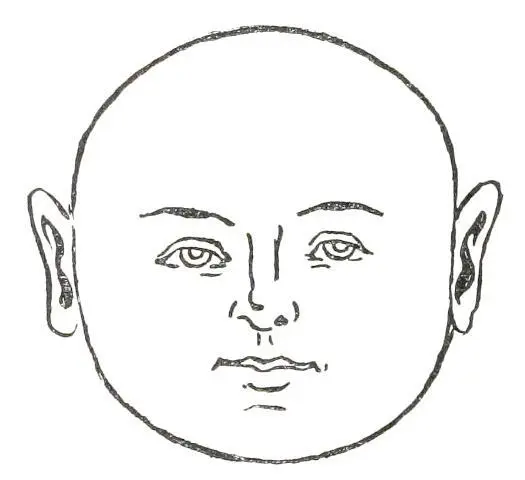
Fig. 12
ROUND FACE
In Fig. 12, we see the Round Face. This face is indicative of the Vital Temperament. It is usually associated with broad shoulders, short neck, full chest, and plumpness, with enlarged abdomen in middle life. These people love ease and physical comforts, good eating and drinking, and not too much hard mental or physical work. They are solicitous of the comfort of their bodies, and generally "look out for No. 1" in this respect. They are generally good-natured and sociable, and often jolly.
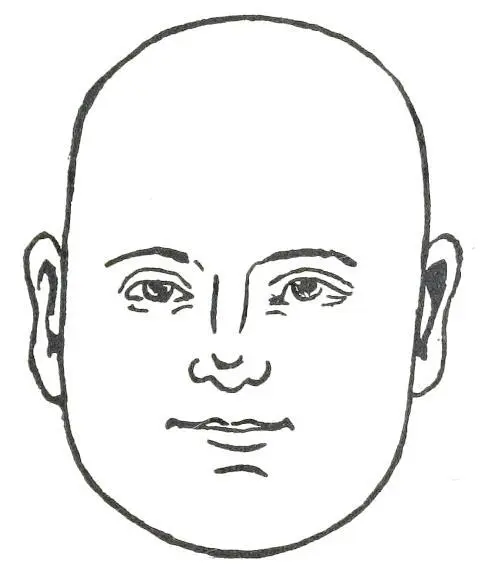
Fig. 13
OBLONG FACE
In Fig. 13, we see the Oblong Face. This face is indicative of the Motive Temperament. It is usually associated with a compact firm body, which while well filled out can scarcely be called plump, certainly not fleshy. These people are generally strong and active, persevering and sparing neither themselves or others in the direction of work. They are apt to have a very fair share of common sense; are practical ; and are generally reliable .
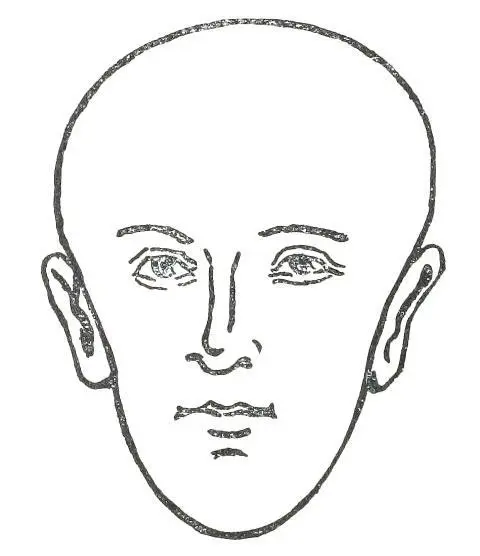
Fig. 14
PEAR-SHAPED FACE
In Fig. 14, we see the Pear-shaped Face. This face is indicative of the Mental Temperament. It is usually associated with a delicately formed body, and finely proportioned physical shape; the shoulders often being narrow, and the neck long. These people manifest the characteristics of mental and nervous force, rather than of vital or motive energy. They often have bright, expressive eyes, and show other signs of the artistic or literary character. They are inclined to be sensitive and impressionable, and to suffer and enjoy keenly.
In addition to the aforementioned general types, there are several others which are modifications thereof, and which we shall now consider.
In Fig. 15, we see the Square Face. This face indicates a combination of the Motive and Vital Temperaments, with the Religio-Moral Qualities deficient and the Selfish-Qualities predominant. These people usually have square, stocky bodies, strong and wiry, and are tenacious of life. They are Materialistic to a degree, and cannot understand others who differ temperamentally from them. Usually, they have Combativeness and Destructiveness large; strong Perceptive Qualities; and but moderate Conscientiousness. They look out for themselves, pushing others aside, and not being disturbed by "the higher feelings." They are generally stubborn; and their weak point is apt to be Amativeness.
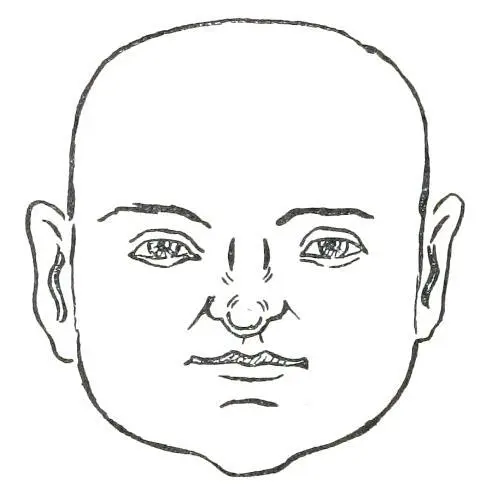
Fig. 15
SQUARE FACE
In Fig. 16, we see the Egg-shaped Face. This face indicates the Mental Temperament with the Psychic Qualities largely in the ascendent. The Selfish Qualities are weak, while the Qualities of Mysticism, Reverence and Ideality are large. These people are generally known as "spiritual," and are often very "psychic." They are generally impractical and dwell in an ideal world apart from the things of earth.
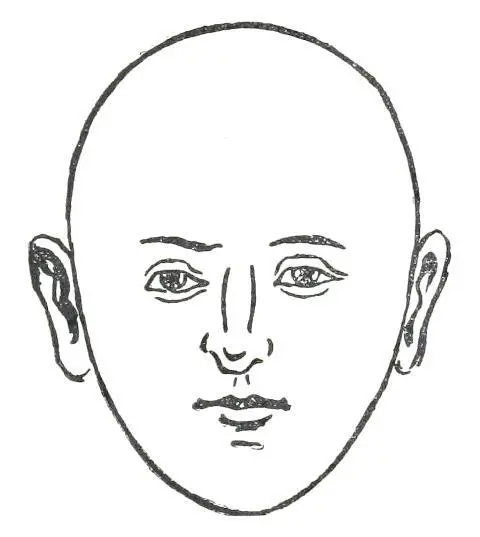
Fig. 16
EGG-SHAPED FACE
In Fig. 17, we see the Inverted-Egg-shaped Face. This face indicates the extreme form of the Vital Temperament, associated with an absence of the active qualities which should accompany it. The Mental and Motive Qualities are quite deficient, while the purely Animal Qualities are strong. The result is a pig-like nature, content with wallowing in the mud of the animal propensities and having a full swill-barrel. These people are essentially lazy, gross, worthless, and animal-like. Note the large lower-face (without the strong jaw), and the small upper head. Note the broad nose, and general lazy expression.
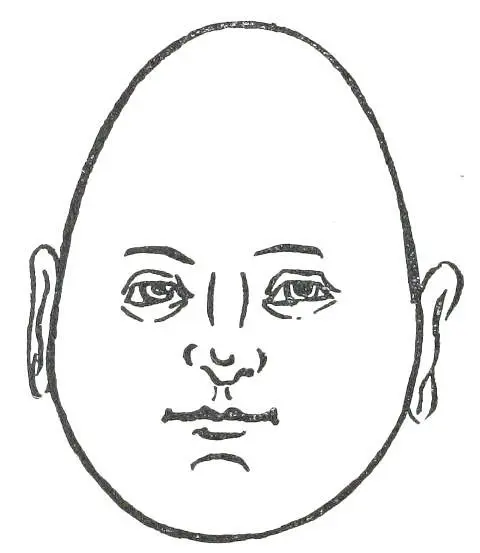
Fig. 17
INVERTED EGG-SHAPED FACE
In Figs. 18 and 19, respectively, we see the contrast between Broad and Narrow Faces. The rule is that Broad Faces indicate fight, destructiveness, and acquisitiveness—the Selfish Faculties, in fact; while Narrow Faces indicate a lack of these qualities. The broad-headed animals are the fighters, while the narrow-heads are the timid and peaceful, as a rule. The same principle applies in the case of men. Look over the charts of the Qualities, and see why this is.
Читать дальше
